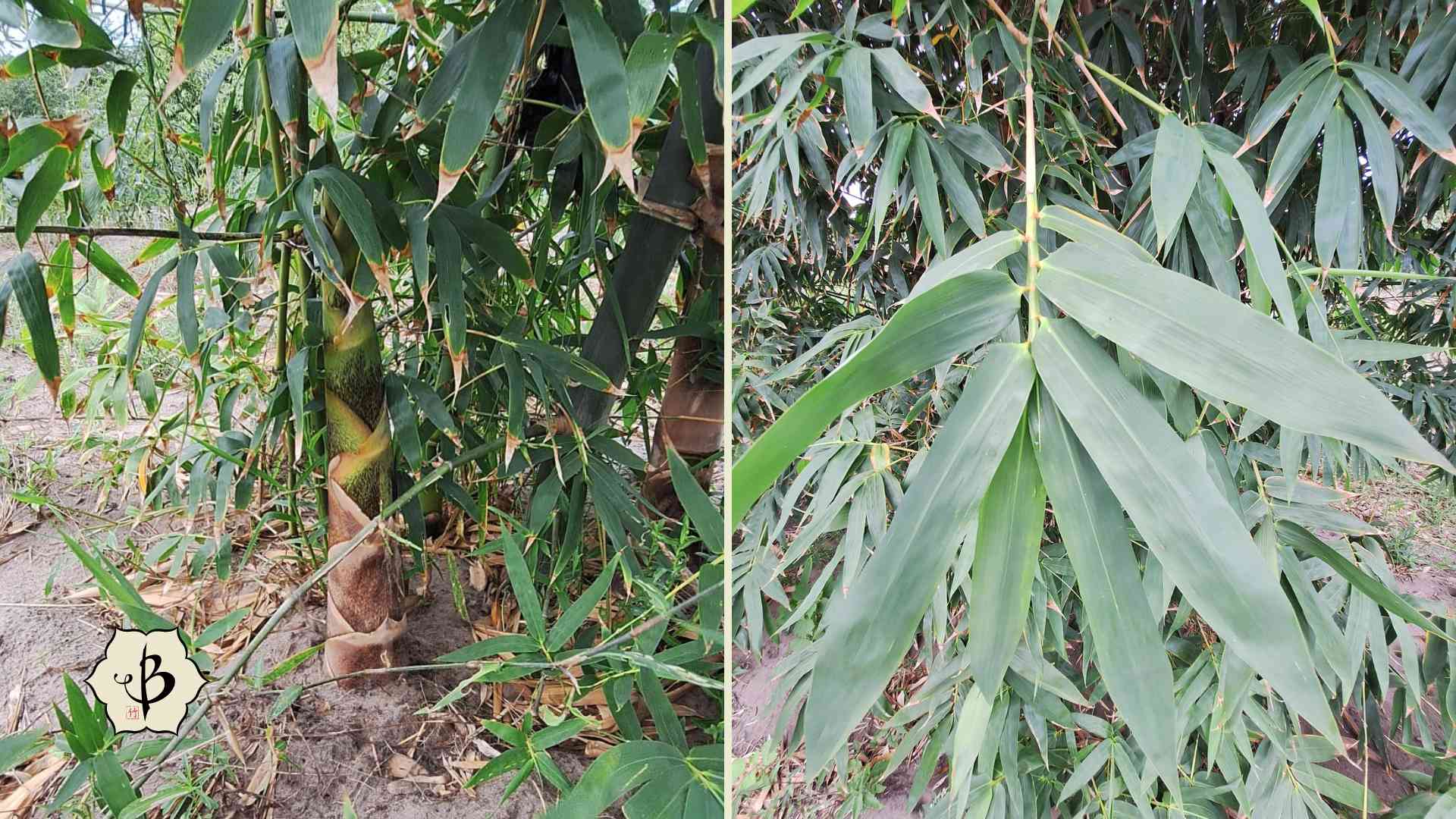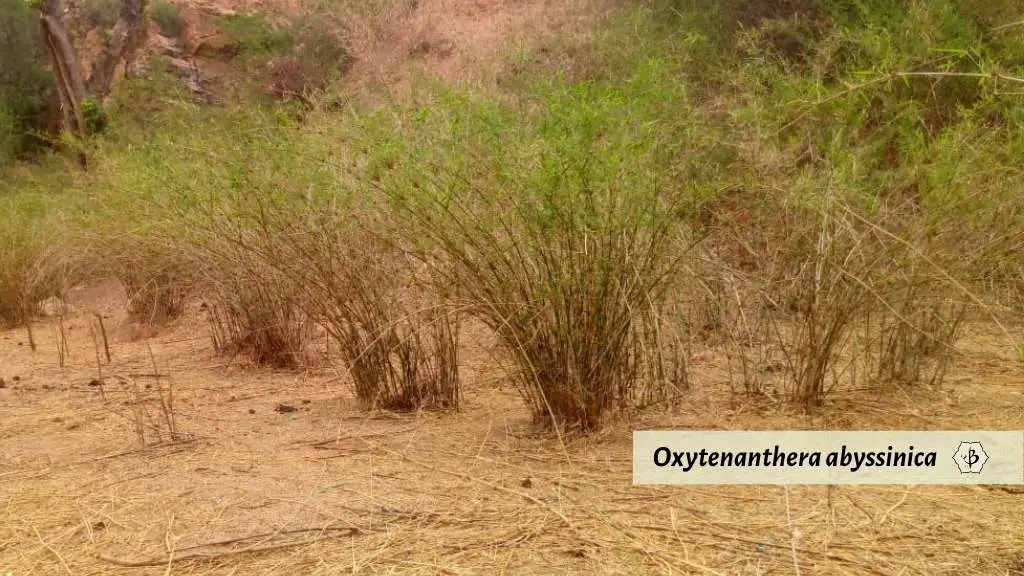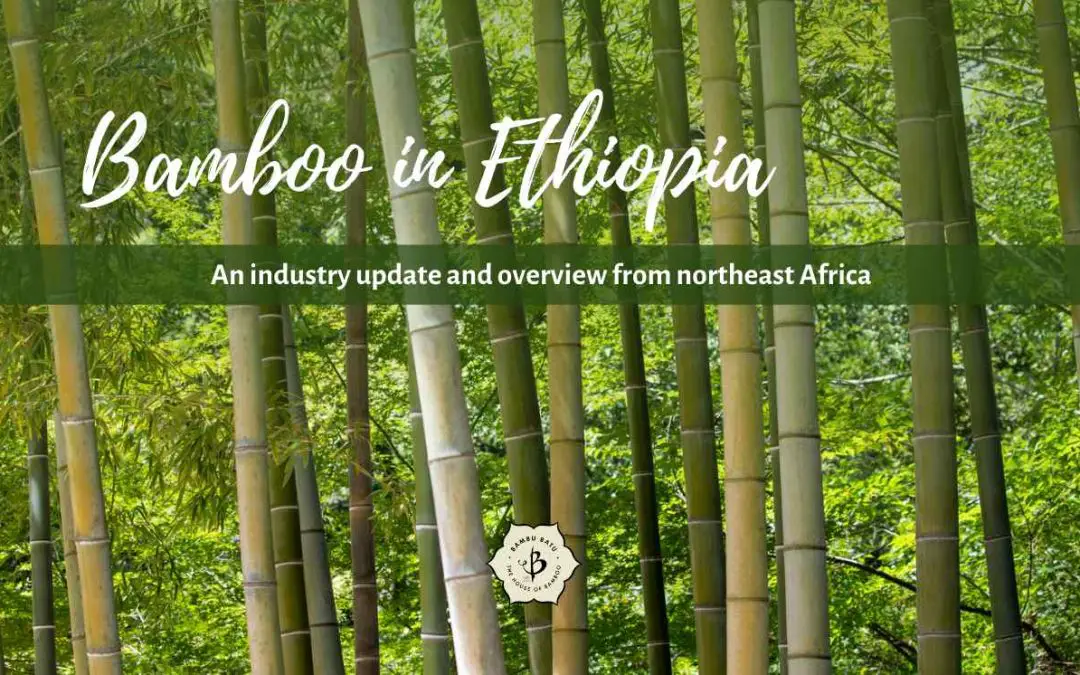Special thanks to guest author Lobna Harboub, expert and specialist in the bamboo supply chain issues of Ethiopia, who contributed this article on the bamboo industry in Ethiopia.
Aside from being the top honey and coffee producer in Africa and having the largest livestock population on the continent, Ethiopia is known for having the largest area of bamboo cover of any country in Africa with around 1.47 million hectares.

Bamboo farming and frustration in Ethiopia
Unfortunately, considering the large bamboo resource base available, Ethiopia has not been able to capitalize on this and the bamboo industry remains underdeveloped. For instance, despite having about 7% of the world’s total bamboo resources, average exports of bamboo products from Ethiopia for the years 2014, 2015, and 2016 accounted for only about 0.02 percent of global exports with the most commonly exported bamboo commodity being bamboo culms. This proves that compared to the share of other bamboo exporting nations and the role played by bamboo in the global economy, the country has not used it even to its minimal potential.
There are multiple reasons for the low economic return obtained, the most notable is the lack of knowledge and skills in bamboo management leading to bamboo use being far below its potential. This limits product diversification and makes knowledge of the potential of the various possible products poor. There aren’t enough technologies available to increase its lifespan and to upgrade the production chain. These limitations and lack of skills result in products that do not appeal to potential purchasers. In addition to that, there’s a complete lack of marketing infrastructure to enable products to reach out and find new markets.
The lack of economic incentive to value bamboo as a useful commodity, in turn, has led to the under-utilization and degradation of bamboo forests and so bamboos are often left neglected on the site after flowering, that is, if the bamboo landscapes aren’t converted into commercial farmlands first.
Considering the experience of countries that are utilizing bamboo for major profit and environmental protection, it is understandable that sustainable bamboo utilization needs bamboo resource development, availability of new scientific information, and proper marketing.
Jayaraman Durai, a representative of INBAR stated that: “Sustainable management of the bamboo sector is extremely important to the future of the country’s market, especially if we want to export the products to the European market where laws stipulate conformity to high sustainability standards”. Therefore, along with appropriate institutions, supporting policies, strategies and legislation, bamboo has a huge potential to contribute to the development of Ethiopia’s green economy and could generate large-scale employment, income and economic development.

Hopes on the horizon
Recently, there has been more interest in national and international circles in bamboo resources for its utilization and sustainable development. For instance, the Environment Forest and Climate Change Commission of Ethiopia and the World Resources Institute have mapped 3 million ha of suitable land for bamboo restoration and many federal and regional research centers are giving special attention to fill the research gaps.
The government has developed a strategy that consists of detailed action plans to be implemented until the year 2030. Ethiopia plans to increase its bamboo cover from the current 1.5 million hectares to 3.5 million in the coming few years. A few industries have also started producing bamboo industrial products.
Hopefully, the potential of this resource is understood and appreciated before the deforestation of bamboo-growing areas coupled with the historical mass flowering and death of the species result in the loss of the unique resource.

Works Cited
1Mekonnen, Z., Worku, A., Yohannes, T., Alebachew, M., Taketay, D., & Kassa, H. (2014). Bamboo Resources in Ethiopia: Their value chain and contribution to livelihoods. Ethnobotany Research and Applications, 12, 511-524.
2 Environment Forest and Climate Change Commission of Ethiopia. (2020). 2019 – 2030 Ethiopian Bamboo Development Strategy and Action Plan. International Bamboo and Rattan Organization.
3INBAR. (2018). Bamboo for land restoration. INBAR Policy Synthesis Report 4. Beijing, China.
4 Kassahun, T. (2014). Review of Bamboo Value Chain in Ethiopia. Journal of Biology, Agriculture and Healthcare, 183.
5 Ezega News. (2019, September 3). Ethiopia Launches First Ever Bamboo Development Strategy. https://www.ezega.com/News/NewsDetails/7226/Ethiopia-Launches-First-Ever-Bamboo-Development-Strategy
6 Mulatu, Y. (2010). Status of bamboo resource development, utilization, and research in Ethiopia: A review. Ethiopian Journal of Natural Resources, 1, 79-98.
Further reading
If you’re interested in the bamboo industry in Ethiopia, you might also find the following articles interesting.

























